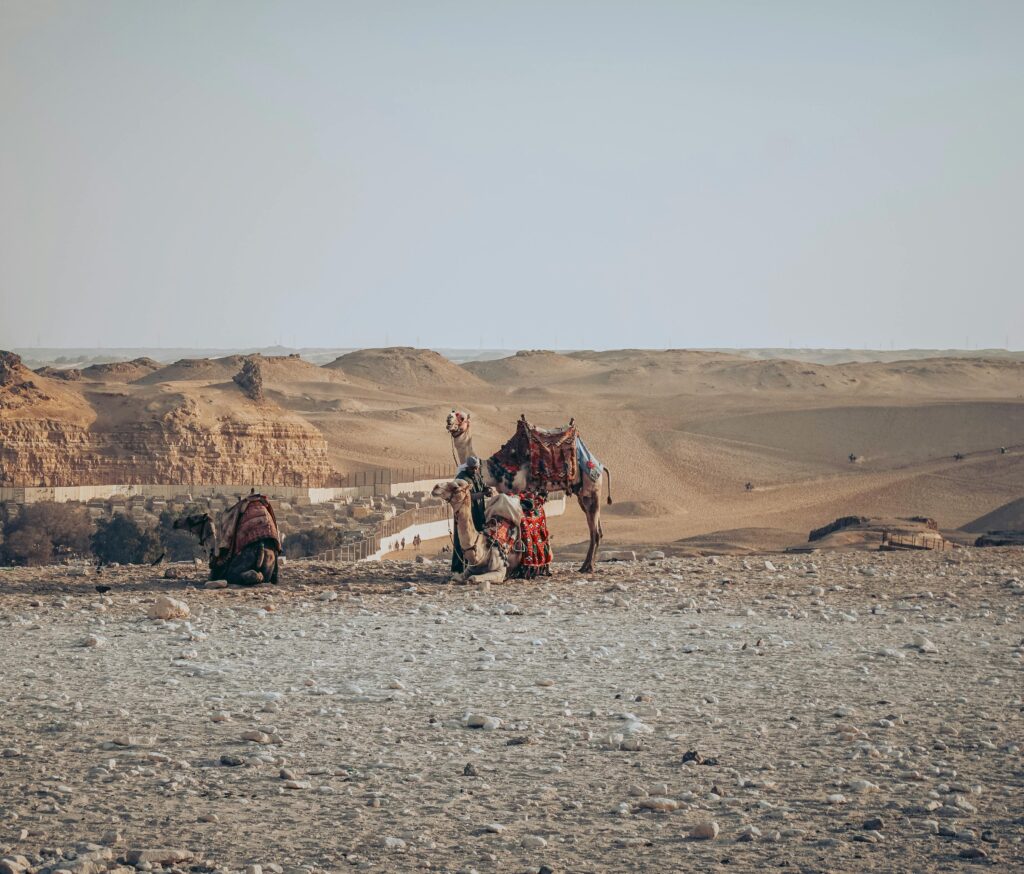Embark on a journey into the heart of the wilderness, where the earth pulsates with the rhythm of nature and the air is filled with the calls of exotic creatures. Safari adventures offer a glimpse into a world where lions roam freely, elephants march majestically, and elusive leopards stealthily traverse the landscape. From the sprawling savannas of Africa to the lush rainforests of South America, and the untamed wilderness of Australia, there are safari experiences to suit every adventurer’s wildest dreams. Join us as we traverse the globe in search of the best safari adventures that promise unforgettable encounters with nature’s most magnificent creations.
Kenya: Maasai Mara National Reserve
Kenya’s Maasai Mara National Reserve stands as an emblem of Africa’s quintessential safari experience. Located in the southwest region of Kenya, it is an integral part of the larger Mara-Serengeti ecosystem. Spanning over 1,500 square kilometers, the reserve is renowned for its abundant wildlife, particularly during the Great Migration when millions of wildebeest, zebras, and gazelles traverse the Mara River in search of greener pastures.
The Maasai Mara offers visitors an opportunity to witness the famed Big Five – lions, elephants, buffalos, leopards, and rhinos – along with numerous other species in their natural habitat. The vast open grasslands, dotted with acacia trees, provide an ideal setting for game drives, balloon safaris, and guided nature walks. Additionally, the reserve is home to the Maasai people, known for their rich culture and traditional way of life. Visitors can immerse themselves in Maasai culture through village visits and cultural performances.
Accommodation options in Maasai Mara cater to a range of preferences, from luxury tented camps overlooking the savannah to budget-friendly lodges. Whether embarking on a safari adventure with family, friends, or solo, Maasai Mara offers an unforgettable experience that captures the essence of Africa’s untamed wilderness.
Tanzania: Serengeti National Park
Tanzania’s Serengeti National Park is synonymous with vast plains teeming with wildlife and awe-inspiring natural beauty. Spanning approximately 14,750 square kilometers in northern Tanzania, the Serengeti is perhaps best known for hosting the annual Great Migration, where millions of wildebeest and zebras journey across the plains in search of fresh grazing lands.
The Serengeti’s diverse habitats, including grasslands, woodlands, and riverine forests, support an incredible array of wildlife, including the Big Five and numerous bird species. Visitors to the park can enjoy game drives, hot air balloon safaris, and guided walks, allowing for unparalleled wildlife viewing opportunities.
In addition to its abundant wildlife, the Serengeti is steeped in history and culture, with the presence of the Maasai people adding to its cultural significance. Cultural visits to Maasai villages offer insights into traditional lifestyles, customs, and rituals, providing a holistic safari experience.
Accommodation options in the Serengeti range from luxurious lodges and tented camps to budget-friendly campsites, ensuring that visitors can find lodging that suits their preferences and budget. Whether witnessing the drama of the Great Migration or marveling at the Serengeti’s year-round wildlife spectacle, a visit to this iconic park promises an unforgettable safari adventure.

South Africa: Kruger National Park
South Africa’s Kruger National Park is a world-renowned safari destination, offering visitors the chance to encounter Africa’s iconic wildlife in a diverse and scenic landscape. Established in 1898, Kruger National Park is one of Africa’s oldest and largest game reserves, spanning nearly 20,000 square kilometers in northeastern South Africa.
The park is home to an impressive array of wildlife, including the Big Five, as well as cheetahs, wild dogs, hippos, crocodiles, and over 500 bird species. Visitors can explore the park on self-drive safaris, guided game drives, or wilderness trails, each offering unique opportunities to observe and appreciate the park’s biodiversity.
Kruger National Park also boasts a rich cultural heritage, with archaeological sites providing insights into early human history in the region. The park’s various rest camps and private lodges offer comfortable accommodation options, ranging from rustic bush camps to luxury lodges, ensuring a memorable and immersive safari experience for every visitor.
In addition to wildlife viewing, Kruger National Park offers a range of activities, including bush walks, birdwatching, and sunset drives, allowing visitors to experience the park’s natural beauty and wildlife from different perspectives. Whether embarking on a safari adventure with family, friends, or solo, Kruger National Park promises an unforgettable journey into the heart of Africa’s wilderness.
India: Ranthambore National Park
Ranthambore National Park, located in the state of Rajasthan, India, is one of the country’s most renowned wildlife destinations. Spread over approximately 392 square kilometers, it is known for its thriving population of Bengal tigers, making it one of the best places in India to spot these majestic big cats in their natural habitat. Apart from tigers, Ranthambore is also home to a diverse range of wildlife, including leopards, sloth bears, striped hyenas, sambar deer, and various species of birds.
The park’s landscape is characterized by dry deciduous forests, grassy meadows, and numerous water bodies, providing ideal habitats for its resident wildlife. Visitors to Ranthambore can explore the park on safari drives, either in open-roofed jeeps or canters, accompanied by experienced guides who offer insights into the park’s flora and fauna. Additionally, the park is dotted with ancient ruins, including Ranthambore Fort, which adds to its historical and cultural significance.
Accommodation options near Ranthambore National Park cater to a range of preferences and budgets, from luxury resorts to budget-friendly guesthouses, ensuring a comfortable stay for visitors. Whether embarking on tiger safaris, birdwatching excursions, or exploring the park’s historical landmarks, Ranthambore offers a memorable safari experience that showcases India’s rich biodiversity and cultural heritage.
Sri Lanka: Yala National Park
Yala National Park, situated in the southeast region of Sri Lanka, is the country’s most visited and second-largest national park. Spanning over 900 square kilometers, Yala is renowned for its dense leopard population, offering visitors one of the best chances to spot these elusive big cats in the wild. In addition to leopards, the park is home to Asian elephants, sloth bears, crocodiles, and a diverse array of bird species.
The landscape of Yala National Park varies from dense forests to open grasslands and coastal lagoons, creating diverse ecosystems that support a rich abundance of wildlife. Visitors can explore the park on safari drives, either in jeeps or safari trucks, accompanied by knowledgeable guides who help navigate the park’s terrain and identify its resident wildlife. The park also features ancient archaeological sites, including Sithulpawwa Rock Temple, adding a cultural dimension to the safari experience.
Accommodation options near Yala National Park range from luxury tented camps to eco-friendly lodges, providing comfortable retreats amidst the wilderness. Whether embarking on leopard safaris, birdwatching expeditions, or exploring the park’s historical landmarks, Yala promises an unforgettable safari adventure that highlights Sri Lanka’s natural beauty and biodiversity.
Brazil: Pantanal Wetlands
The Pantanal Wetlands in Brazil offer a unique safari experience amidst one of the world’s largest tropical wetland areas. Encompassing an expansive area that spreads across Brazil, Bolivia, and Paraguay, the Pantanal is celebrated for its remarkable biodiversity and pristine natural landscapes. Unlike the dense rainforests of the Amazon, the Pantanal’s open marshlands and savannas provide excellent opportunities for wildlife viewing, earning it the reputation of being one of the best places in South America for safari adventures.
The Pantanal is home to an incredible array of wildlife, including jaguars, giant otters, capybaras, and an astonishing variety of bird species. Visitors can explore the wetlands on boat safaris, horseback rides, or guided walks, accompanied by experienced local guides who possess intimate knowledge of the area and its inhabitants. The dry season (from May to September) is particularly popular for wildlife viewing, as animals congregate around the diminishing water sources, offering unparalleled opportunities for sightings.
Accommodation options in the Pantanal range from rustic lodges to luxury eco-resorts, providing visitors with comfortable bases from which to explore the wetlands. Whether embarking on jaguar tracking excursions, birdwatching tours, or cultural experiences with local communities, the Pantanal promises an unforgettable safari adventure that showcases Brazil’s rich natural heritage.
Ecuador: Galapagos Islands
The Galapagos Islands, located off the coast of Ecuador, are a UNESCO World Heritage Site renowned for their unparalleled biodiversity and unique wildlife. Often referred to as a living laboratory of evolution, the Galapagos Islands played a pivotal role in shaping Charles Darwin’s theory of natural selection. Today, the islands continue to captivate visitors with their extraordinary wildlife encounters and pristine natural landscapes, making them a premier destination for eco-conscious travelers seeking a safari experience like no other.
The Galapagos Islands are home to an astonishing array of endemic species, including giant tortoises, marine iguanas, blue-footed boobies, and Galapagos penguins. Visitors can explore the islands on guided wildlife cruises, snorkeling excursions, and hiking trips, accompanied by knowledgeable naturalist guides who provide insights into the islands’ ecology and conservation efforts. Each island offers unique experiences, from witnessing the courtship dances of blue-footed boobies to swimming alongside sea lions in crystal-clear waters.
Accommodation options in the Galapagos Islands range from eco-friendly lodges to luxury yacht cruises, ensuring a comfortable and immersive safari experience for visitors. Whether snorkeling with hammerhead sharks, hiking to volcanic craters, or observing giant tortoises in their natural habitat, a visit to the Galapagos Islands promises a safari adventure unlike any other, where nature takes center stage and conservation efforts are paramount.
FAQs
Q. What are some popular safari destinations around the globe?
A. Some popular safari destinations include:
- Maasai Mara National Reserve, Kenya
- Serengeti National Park, Tanzania
- Kruger National Park, South Africa
- Okavango Delta, Botswana
- Ranthambore National Park, India
- Yellowstone National Park, USA
- Etosha National Park, Namibia
Q. What animals can I expect to see on a safari?
A. The animals you can expect to see vary depending on the location, but common sightings include lions, elephants, giraffes, zebras, cheetahs, rhinos, hippos, buffaloes, and various species of antelope and birds.
Q. When is the best time to go on a safari?
A. The best time to go on a safari depends on the destination and the type of experience you want. Generally, dry seasons are preferred as wildlife is easier to spot near water sources. However, some destinations offer unique experiences during the wet season, such as bird watching or witnessing the Great Migration in East Africa.
Q. What should I pack for a safari trip?
A. Essential items to pack for a safari include lightweight, neutral-colored clothing, a wide-brimmed hat, sunscreen, insect repellent, sturdy walking shoes, binoculars, a camera with extra batteries and memory cards, a reusable water bottle, and any necessary medications. It’s also important to check with your tour operator for specific packing recommendations.
Q. Are safaris suitable for children?
A. Many safari lodges and camps welcome children and offer family-friendly activities. However, it’s important to consider factors such as the child’s age, the destination’s malaria risk, and the length of game drives. Some lodges have age restrictions for safety reasons, so it’s best to check with the safari operator before planning a trip with children.
Conclusion
As our journey through the world of safari adventures comes to an end, one thing becomes abundantly clear – the call of the wild is universal. Whether you find yourself mesmerized by the vast plains of Africa, enchanted by the tropical forests of Asia, or captivated by the diverse ecosystems of South America and Australia, the magic of safari experiences knows no bounds. These encounters with nature’s wonders leave an indelible mark on the soul, reminding us of our deep connection to the natural world and the importance of preserving it for generations to come. So, pack your bags, venture into the unknown, and let the wild spirit within you roam free. The adventure of a lifetime awaits, beckoning you to explore the untamed beauty of our planet and discover the wonders that lie beyond the beaten path.




